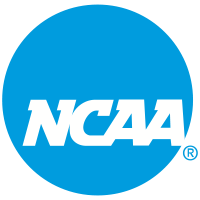Ignatius L Hoops
Well-known member
- Joined
- Sep 9, 2015
- Messages
- 10,935
- Reaction score
- 3,770
- Points
- 113

Women’s Basketball Rules Committee recommends flopping penalty - NCAA.org
If a proposal by the NCAA Women's Basketball Rules Committee is approved for the 2023-24 season, women's basketball players judged to have flopped would be issued
 www.ncaa.org
www.ncaa.org
Flopping, restrictive area reduction, a new class of technical foul etc.
If a proposal by the NCAA Women's Basketball Rules Committee is approved for the 2023-24 season, women's basketball players judged to have flopped would be issued a warning on the first offense, with a technical foul being charged for any subsequent infractions.
Under the recommendation, the second and any subsequent flop calls would count toward the team foul count but would not count toward a player's five fouls leading to disqualification.
The committee met Wednesday-Friday in Indianapolis. All rules proposals must be approved by the NCAA Playing Rules Oversight Panel before becoming official. The panel is scheduled to discuss women's basketball recommendations June 8.
Rules committee members think the recommendation is needed for the sport after receiving feedback from all three divisions about their concerns regarding flopping.
The committee hopes this change will reduce situations where players are trying to fool the officials.
"For the last two years, the rules committee made faking and flopping a point of emphasis for officials," said Amy Vachon, rules committee chair and head coach at the University of Maine. "There is still a growing concern about this issue in women's basketball, so this is the committee's attempt to address the issue."
Restricted-area arc, lower defensive box
After a thorough discussion, rules committee members recommended reducing the restricted-area arc from 4 feet in the lane to the area directly underneath the basket. Defenders cannot establish a legal guarding position directly underneath the basket. The proposal would also eliminate the lower defensive box rule.
Under this proposal, there would be no need for any additional court markings on the floor.
The committee hopes simplifying the rule will bring about a better understanding for officials, coaches, players and fans.
"The original rule was intended to reduce crashes at the basket," Vachon said. "The committee doesn't believe this goal was accomplished. This rule change will permit the defense to defend more of the lane, without allowing charges to be taken underneath the basket."
Currently, secondary defenders must be outside the 4-foot restricted-area arc to draw a charge. The lower defensive box is an imaginary area designated by two tick marks on the end line and the second lane space marks from the free-throw line and distinguishes when the restricted-area rule is or is not in effect.
Other recommended rules proposals
- Players would be allowed to wear numbers 0-99.
- Schools would no longer have to submit a waiver for players to wear religious headwear, provided it is safe for competition.
- An amber light strip would be permitted on the backboard to signal the end of a shot-clock period.
- An optional rule would allow for live video to be transmitted to the bench area. This has been an experimental rule for the past two years.
- A new class of technical fouls would be assessed to the team and not an individual offender. Delay-of-game warnings and flopping will fall under this category.
- When the shot clock is off at the end of a quarter or overtime, officials would use the game clock to determine when a 10-second backcourt violation has occurred.
- A permissive rule would permit conferences to implement an off-site collaborative replay system to assist game officials with replay situations.
- The shot clock would be reset to 20 seconds or the time remaining, whichever is greater, when there is a foul by the nonshooting team, but not against the shooter, during a try in flight that does not strike the ring or flange.
- Defenders would be prohibited from placing their body on the ball handler/dribbler.
- Officials would be allowed to use replay throughout the entire game for off-ball foul scoring plays; the review would be conducted during the next media timeout or intermission.
Point of emphasis
Committee members are concerned about the uptick in bench decorum and misconduct incidents that took place during the 2022-23 season.
There were significant increases in intentional fouls, technical fouls and disqualifying fouls last season.
New chair
Baylor coach Nicki Collen was elected chair of the committee

